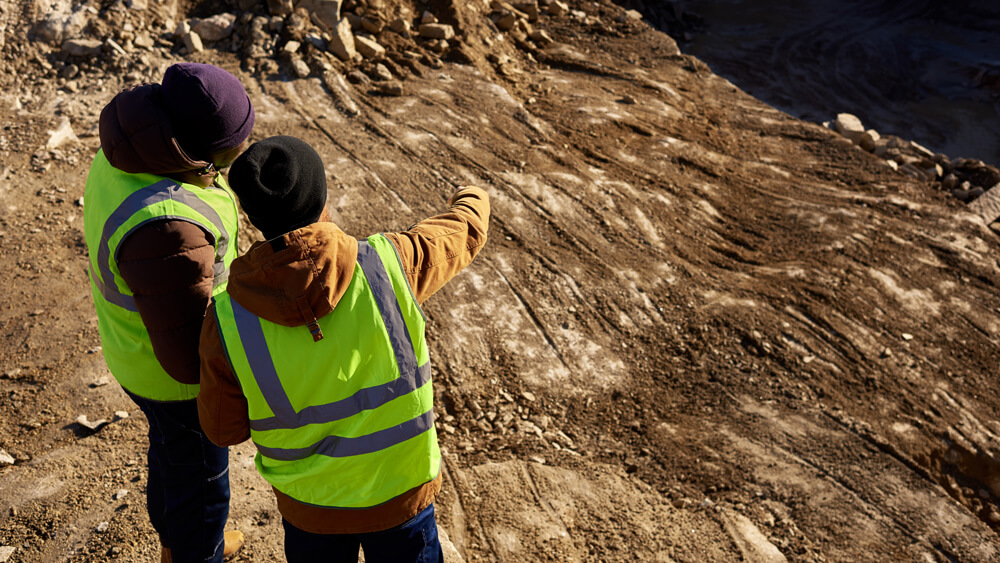What’s been associated with luxury and wealth, and is a girl’s best friend? Diamonds, and for long as well. Often used to commemorate special milestones like engagements, weddings, and anniversaries, diamonds are known worldwide.
However, with growing concerns about ethical practices in the jewelry industry, many Canadians are beginning to question the origins of the diamonds they purchase. It’s no mystery that blood diamonds (conflict diamonds) exist throughout the world, and because of the demand for diamonds, many stores go to blood diamonds. In this blog post, we aim to provide a comprehensive guide to diamond traceability specifically for Canadians, exploring the challenges and opportunities associated with ethical diamond sourcing.
What is diamond traceability?
Diamond traceability being simplified is the process of tracking a diamond’s journey from the mining stages to the finished product. This includes information about where the diamond was mined, how it was cut and polished, and who handled it during the process. The goal of diamond traceability is to ensure that diamonds are ethically sourced and do not contribute to conflict or exploitation.
Kimberley process overview
The Kimberley Process is an international certification scheme made in 2003 to prevent the trade of conflict diamonds. It requires all rough diamonds to be accompanied by a certificate of origin, their timeline, and that they are traded only between countries that are part of the scheme.
Not only was this successful, but it allows the person buying the diamond to get an assurance of their diamonds. From where it was first found & mined, to the distributor, to the store owner, and all of the in-between. The Kimberley Process has been successful in reducing the trade of conflict diamonds, but it has also been criticized for not being comprehensive enough.
There are scenarios with lots of diamonds; different variations (The Five C’s), rarity, and conflict diamonds. The Kimberley Process allows the diamonds to be separated and for the buyer to know what they are purchasing.

Challenges with diamond traceability
Whilst the Kimberley Process has drastically decreased the trade of conflict diamonds, tracking the journey of a diamond remains a challenge. The diamond supply chain is complex, and diamonds are frequently mined in developing countries where regulations and oversight are limited.
Along with mix-ups of all sorts, for example, an inspector mixes up two diamonds with their tracking. If someone goes to check, they’ll never know how it happened, and can’t sell the diamond. This goes for everything from custom engagement rings, to necklaces.
This makes it challenging to track the journey of a diamond and ensure that it was ethically sourced. Unfortunately for many, the diamond industry is often secretive to increase their prices, values and more reasons. Which makes it even more difficult for Canadians to know where their diamonds come from.
Lab-grown diamonds: an ethical alternative
The most ethical and sustainable alternative to mined diamonds, are lab-grown diamonds. These diamonds are created in a laboratory setting and have the same chemical and physical properties as natural diamonds. Along with everything else, they are additionally traceable, including their origin. Lab-grown diamonds are a great ethical and sustainable option for those Canadians who want the beauty and elegance of a diamond without ethical concerns.
If you’re curious or want to learn more about lab-grown diamonds feel free to browse through our blogs to find our blog specific to lab-grown, as we have information about nearly all types of diamonds.
The benefits of ethical diamond sourcing
By choosing ethically sourced diamonds, Canadians can ensure that they are not contributing to conflict or exploitation in the diamond industry. Ethical diamond sourcing also supports responsible and sustainable mining practices, which can have a positive impact on the environment and local communities.

It’s still good to have a reminder, that supporting normally mined diamonds is still massively important, as it supports hard-working miners, their funding & machinery, sources, and many others. Moreover, ethical diamond sourcing can help to promote transparency and accountability in the jewelry industry, which benefits both consumers and producers.
Making informed diamond purchasing decisions
As Canadians, we have our responsibility to ensure that the diamonds we purchase are ethically sourced. When shopping for diamonds, it is important to ask questions about the origin of the diamond and to look for certification from reputable organizations like the Kimberley Process.
On top of this, if you want to make more informed decisions, check out our blog section for questions to ask your jeweler. Moreover, consumers can choose to support companies that prioritize ethical sourcing and sustainable practices. If you’re on the market for the perfect diamond check out our diamond search.
Conclusion
Diamond traceability is an issue of great complexity, but by choosing ethically sourced diamonds or lab-grown diamonds, Canadians can make a positive impact on the jewelry industry. By promoting transparency, accountability, and sustainability, Canadians can contribute to a more responsible and ethical diamond industry.



